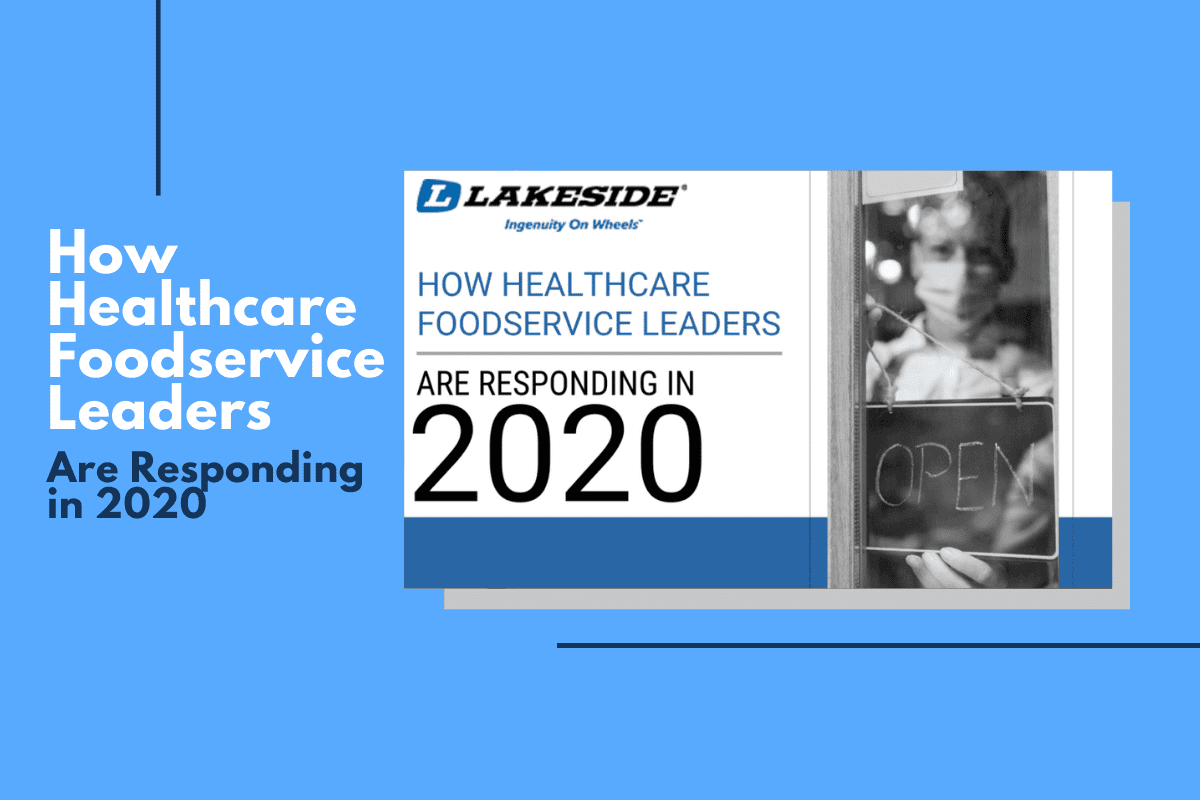
Pressure was placed on healthcare foodservice leaders to develop an unexpected pandemic response plan.
Many have prepared for emergencies like fires, tornadoes, hurricanes, or mass shootings, but a pandemic was not on the list for the near future. Since being prepared is key to any good action plan, a lot of pressure was placed on healthcare foodservice leaders to develop an unexpected pandemic response plan. Nonetheless, they stepped up to the plate and knocked it out of the park with response plans created to anticipate the worst, respond immediately, and adapt to the inevitable changes to come. Circumstances differ from hospital to hospital due to location and outbreak, but food service leaders are working hard to keep providing food to patients and staff.
How Healthcare Foodservice Leaders Are Responding in 2020
Massive Spreadsheets With New Responsibilities
In a concise period of time, hospitals were pushed into making many months’ worth of decisions. Julie Meddle and her team at The Ohio State Wexner Medical Center (OSUWMC) in Columbus, Ohio, responded by making massive spreadsheets to stay organized. New responsibilities surfaced, and some staff members were part of making plans out of their normal responsibilities to prepare for the worst. For example, making plans to convert The Greater Columbus Convention Center into a hospital anticipating an influx in COVID-19 patients and a higher demand for patient care rooms and food service. They haven’t had to do it yet, but the plans are made if the winter sees an unexpected spike.
Plan For Different Scenarios
Staff at the Food, Nutrition, and Environmental Services at Hennepin Healthcare in Minneapolis responded with a plan for different scenarios. Headed by Director Bill Marks, team members immediately discussed the best way to prepare for the crisis, like what to do if patients filled every bed, staff got sick, and how to get core ingredients for the kitchen despite COVID-19 limitations.
A scenario not discussed right away was what to do when there was a significant drop in people on a hospital campus due to procedures being rescheduled and limited visitations. At one point, declines as high as 17% and even 75%, in some cases, were being reported in retail foodservice volumes. Nonetheless, adjustments were quickly made, and food service staff was dispersed throughout the hospital to help in as many ways as possible.
Develop a Cause, Effect, Revolution (CER) Statement
Tim Schoonmaker, system director and executive chef of Centra Culinary Creations at Centra Health in Lynchburg, Va., created a CER statement to respond to the COVID-19 outbreak. Schoonmaker on their CER statement plan:
“The CER statement should be very thorough and list all possible situations…” and “This is not something that can be written in an hour or two. It will take days to complete” because it needs to be very specific.
Additional precautions include updating their current situation on staffing, supplies, and productivity, changing operations to comply with current guidelines, and working with HR to provide meals to caregivers.
Stay Informed and Follow the Situation Closely
The more you know about the pandemic and its evolving effects on the foodservice industry, the better prepared you will be to adjust and respond to any potential problems or changes. The FoodService Director team is responding by staying informed and reporting what they find, “following the situation closely, providing timely reports on the state of the industry, and how operators can deal with the crisis.”
The impact the COVID-19 pandemic is expected to have on the foodservice industry is significant, so making responsible decisions on dealing with the crisis based on timely reports will help guide foodservice leaders through the pandemic and back on their feet.
